Your cart is currently empty!
Tag: Conservation
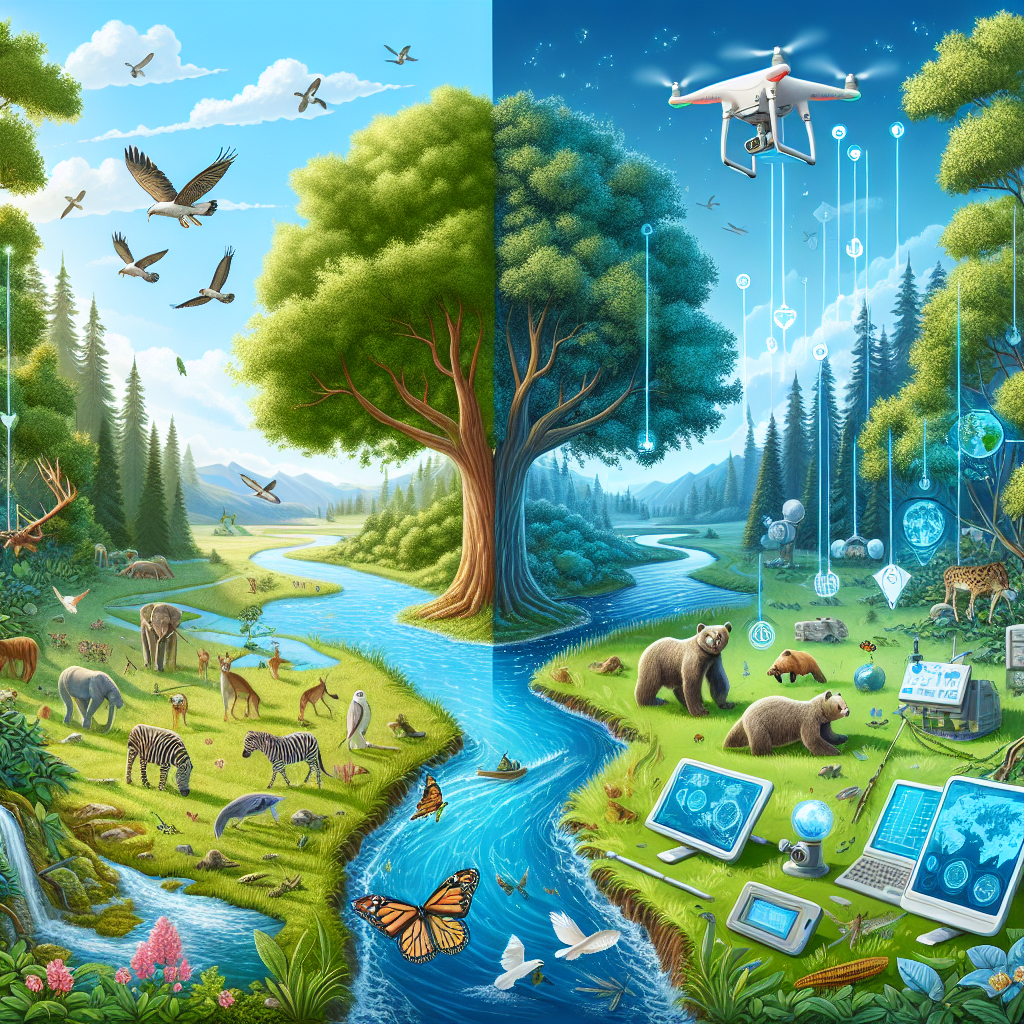
Harnessing the Power of Remote Monitoring for Environmental Monitoring and Conservation
In today’s technology-driven world, remote monitoring has become an invaluable tool for environmental monitoring and conservation efforts. By harnessing the power of remote monitoring systems, researchers and conservationists are able to gather real-time data on environmental conditions and track changes over time with unprecedented accuracy.Remote monitoring systems utilize a network of sensors and cameras placed strategically in the field to collect data on various environmental parameters, such as temperature, humidity, air quality, water quality, and wildlife activity. This data is then transmitted wirelessly to a central server, where it can be analyzed and interpreted by experts.
One of the key benefits of remote monitoring is its ability to provide continuous, real-time data on environmental conditions. This allows researchers to detect changes in the environment quickly and respond accordingly. For example, if a sudden increase in water temperature is detected in a river, it could indicate a potential pollution event or fish kill, prompting immediate action to mitigate the impact.
Remote monitoring also enables researchers to monitor large, remote areas that are difficult or dangerous to access on foot. This is particularly valuable for monitoring wildlife populations in their natural habitats, as it allows researchers to gather data without disturbing the animals or their environment. For example, camera traps can be set up in the forest to monitor the movements of endangered species, such as tigers or elephants, without the need for human presence.
Furthermore, remote monitoring can help conservationists track the effectiveness of conservation efforts, such as reforestation projects or marine protected areas. By monitoring changes in vegetation cover or fish populations over time, researchers can assess the impact of their interventions and make informed decisions on future conservation strategies.
In addition to monitoring environmental conditions, remote monitoring systems can also help prevent illegal activities, such as poaching or illegal logging. By setting up cameras and sensors in vulnerable areas, conservationists can detect and deter illegal activities, ultimately helping to protect endangered species and ecosystems.
Overall, harnessing the power of remote monitoring for environmental monitoring and conservation is a game-changer for researchers and conservationists. By providing real-time data on environmental conditions, tracking changes over time, and aiding in the protection of endangered species, remote monitoring systems are essential tools in the fight to preserve our planet’s biodiversity and natural resources.
Canadian Black Hawk helicopters patrolling Minnesota border along with conservation officers
The Royal Canadian Mounted Police have launched new Black Hawk helicopters, along with Manitoba Conservation Officers are now patrolling the border with the United States, including with northern Minnesota.
“Everybody in Manitoba right now is paying attention to building up the relationship with the United States of America,” said Manitoba Premier Wab Kinew. “Having a strong and secure border is important to us.”
Manitoba officials announced on Monday that conservation officers will now be used to look for drug and human trafficking.
A little more than a week ago, the Royal Canadian Mounted Police launched Black Hawk helicopters to work the border — including the Minnesota border with Manitoba. “I’m sure you’ll probably hear it, might see it — it will be flying on the Canadian side,” said RCMP Assistant Commissioner Lisa Moreland. The new helicopters allow the RCMP to deploy teams of officers quickly if they detect people crossing the border in regions where conditions and the elements can be harsh.

Credit: Serge Gouin, RCMP-GRC
© His Majesty the King in Right of Canada, 2025
Credit: Serge Gouin, RCMP-GRC
© His Majesty the King in Right of Canada, 2025
Credit: Serge Gouin, RCMP-GRC
© His Majesty the King in Right of Canada, 2025
Credit: Serge Gouin, RCMP-GRC
© His Majesty the King in Right of Canada, 2025
Credit: Serge Gouin, RCMP-GRC
© His Majesty the King in Right of Canada, 2025“If you’re not prepared, that area is unforgiving,” Moreland said. “Having the Black Hawk to be able to respond quickly I can tell you it will help tremendously,” Moreland said. Last week, President Donald Trump mentioned possibly imposing 25% tariffs soon on Mexico and Canada — as the United States tries to stop illegal immigration and the flow of fentanyl.
U.S. Customs agents seized 43 pounds of fentanyl at the Canadian border last fiscal year, compared with more than 21,000 pounds (21,100) at the Mexico border.
U.S. Border Patrol FY2024 data shows more than 1.5 million people encountered or apprehended on the southern border with Mexico, compared to more than 23,000 people apprehended on the Canadian border.
“I think it’s unfortunate that the President of the United States has to tell us that we need to secure our border better,” said Dave Carlson, a top government official in the municipality of Emerson-Franklin in Manitoba. “I think a lot of people have felt that it’s not secure enough.”
“The additional eyes and ears on the border is really a good thing because we have seen those tragedies when people cross in inclement weather and get themselves into a bad situation,” Carlson said.
The Associated Press contributed to this report.
In a recent development, Canadian Black Hawk helicopters have been spotted patrolling the Minnesota border alongside conservation officers. This increased presence is aimed at curbing illegal activities such as poaching and unauthorized border crossings.The collaboration between Canadian military helicopters and conservation officers signals a united effort to protect the natural resources and wildlife in the region. This joint operation is crucial in safeguarding the delicate ecosystem and maintaining the integrity of the border.
Residents and visitors in the area are urged to cooperate with authorities and report any suspicious activities to ensure the safety and preservation of the environment. The heightened surveillance is a proactive measure to deter illegal activities and uphold the laws and regulations in place.
As we continue to see the importance of conservation efforts and border security, it is reassuring to witness the cooperation between different agencies working together towards a common goal. Let’s all do our part in protecting our natural resources and promoting sustainable practices for future generations to enjoy.
Tags:
- Canadian Black Hawk helicopters
- Minnesota border patrol
- Conservation officers
- Canadian military presence
- Border security measures
- Wildlife conservation efforts
- Minnesota-Canada border surveillance
- Helicopter patrols in Minnesota
- Cross-border security cooperation
- Canadian-US border protection.
#Canadian #Black #Hawk #helicopters #patrolling #Minnesota #border #conservation #officers
Promotion & Conservation of Health, Strength & Mental Energy: (Original Version, Restored)
Price: $11.40
(as of Jan 21,2025 07:12:38 UTC – Details)
Publisher : CreateSpace Independent Publishing Platform; Original edition (February 28, 2012)
Language : English
Paperback : 114 pages
ISBN-10 : 1470105942
ISBN-13 : 978-1470105945
Item Weight : 4.3 ounces
Dimensions : 5.06 x 0.26 x 7.81 inches
Promotion & Conservation of Health, Strength & Mental Energy: (Original Version, Restored)In today’s fast-paced world, it can be easy to neglect our physical and mental well-being. However, it is essential to prioritize the promotion and conservation of our health, strength, and mental energy in order to live a fulfilling and balanced life.
One of the key ways to achieve this is through regular exercise and physical activity. Whether it be going for a run, practicing yoga, or hitting the gym, staying active is crucial for maintaining our physical health and strength. Not only does exercise help to keep our bodies strong and fit, but it also has numerous mental health benefits, such as reducing stress and anxiety.
In addition to physical activity, it is important to nourish our bodies with a balanced diet rich in nutrients. Eating a variety of fruits, vegetables, whole grains, and lean proteins can help to fuel our bodies and provide us with the energy we need to tackle our daily tasks. It is also important to stay hydrated by drinking plenty of water throughout the day.
Furthermore, it is essential to prioritize mental health and well-being. Taking time to practice self-care activities such as meditation, mindfulness, and relaxation techniques can help to reduce stress and improve mental clarity. Additionally, seeking support from friends, family, or a therapist can be beneficial for maintaining good mental health.
By taking proactive steps to promote and conserve our health, strength, and mental energy, we can lead happier and more fulfilling lives. Remember, your health is your greatest asset, so make it a priority.
#Promotion #Conservation #Health #Strength #Mental #Energy #Original #Version #Restored,health & strengthNewly built border wall segment further endangers rare desert fish, conservation organization says
A newly built segment of border wall in southern Arizona will keep out more than just illegal immigrants, a nonprofit conservation organization says.
The border wall segment and a “paved road across Arizona’s California Gulch is blocking streamflow critical to the survival of one of only two U.S. populations of Sonora chub,” a press release from the Center for Biological Diversity reads.
The “rare desert fish” is a “small, moderately chubby fish that feasts on a variety of native food sources and has a unique and distinctly red coloration on the underside when in breeding condition,” the organization says.
“The new wall and road will push these imperiled fish to the brink of extinction,” Krista Kemppinen, Ph.D., a senior scientist at the Center for Biological Diversity, said in a statement.
LINDSEY GRAHAM DEFENDS KASH PATEL IN HEATED EXCHANGE WITH CBS HOST

A then and now look at the section of border wall in southern Arizona that impacts the endangered Sonora chub fish. (Russ McSpadden/Center for Biological Diversity)
“The Sonora chub’s survival depends on being able to access scarce desert water on both sides of the border, exchange genetic material with nearby populations in Mexico, and bolster its populations with upstream migrations of fish from Sonora after droughts. The new construction makes all that impossible,” she continued.
The organization drew attention to the matter just days before President-elect Donald Trump is set to retake office and ramp up his border security efforts.
TRUMP TO BE SWORN IN ON BIBLE GIVEN TO HIM BY HIS MOTHER, AND THE LINCOLN BIBLE

A closeup look of the endangered Sonora chub, a “stream-dwelling minnow” that is usually five to seven inches long. (U.S. Fish & Wildlife Service)
“Designating California Gulch as critical habitat is more urgent than ever to minimize other threats, such as by keeping cows out of the Sonora chub’s pools,” Kemppinen said in the statement. “It’s also imperative that carefully designed culverts be added to the new border infrastructure to allow at least some semblance of a natural streamflow and migration. If federal officials are serious about saving this fish, they need to act now.”
Earlier this month, Trump set off a fiery debate over whether Democrats should be to blame for California’s wildfires after he accused Gov. Gavin Newsom of caring more about protecting endangered fish species known as smelt than protecting the state’s residents from wildfires.

President Donald Trump speaks with U.S. Border Patrol Chief Rodney Scott as they participates in a ceremony commemorating the 200th mile of border wall at the international border with Mexico in San Luis, Arizona, on June 23, 2020. (SAUL LOEB/AFP )
CLICK HERE TO GET THE FOX NEWS APP
Trump set off a firestorm on Wednesday when he called out Newsom on his Truth Social platform for wanting “to protect an essentially worthless fish” over protecting the water needs of Californians. The comments are not new, however. In the run-up to the November election, Trump made the claim during an October interview with podcaster Joe Rogan.
Neither the Center for Biological Diversity nor the Trump transition team responded to a request for comment regarding this story.
Fox News’ Alec Schemmel contributed to this report.
The construction of a newly built border wall segment along the U.S.-Mexico border is causing concern for the endangered desert pupfish, a rare species of fish that inhabits the region. According to a conservation organization, the wall is further endangering the already declining population of these unique fish.The desert pupfish, known for its ability to survive in extreme desert conditions, has already been facing threats from habitat destruction and water pollution. The construction of the border wall is now posing an additional threat to their survival, as it disrupts their natural habitat and blocks their migration patterns.
Conservationists are calling for action to protect the desert pupfish and other endangered species that are being affected by the border wall construction. They are urging policymakers to consider the environmental impacts of the wall and to find alternative solutions that will not harm these vulnerable species.
As the debate over border security continues, it is important to remember the important role that conservation plays in protecting our planet’s biodiversity. The desert pupfish is just one example of the many species that are at risk of extinction due to human activities, and it is crucial that we take action to preserve their habitats and ensure their survival for future generations.
Tags:
- Border wall impact on rare desert fish
- Conservation organization warns of border wall threat
- Endangered desert fish at risk from new border wall segment
- Protecting rare fish from border wall construction
- Environmental concerns over new border wall segment
- Rare desert fish endangered by border wall project
- Conservation efforts threatened by border wall expansion
- Border wall impact on desert fish habitat
- Endangered species threatened by border wall construction
- Conservation group raises alarm about border wall’s impact on rare fish
#Newly #built #border #wall #segment #endangers #rare #desert #fish #conservation #organization

The Potential of STH0A in Environmental Conservation
As the world continues to face environmental challenges such as climate change, deforestation, and pollution, the need for innovative solutions to protect our planet has never been more urgent. One technology that has shown great potential in environmental conservation is STH0A, a cutting-edge system that combines satellite imaging, artificial intelligence, and data analytics to monitor and manage natural resources.STH0A stands for Satellite Technology for Humanitarian and Environmental Applications, and it has been developed by a team of scientists and engineers who are committed to using technology for the greater good. By harnessing the power of satellites orbiting the Earth, STH0A is able to capture high-resolution images of the planet’s surface, allowing researchers to track changes in land use, deforestation rates, and wildlife habitats.
But what sets STH0A apart from other satellite imaging technologies is its advanced artificial intelligence algorithms, which are capable of analyzing vast amounts of data in real-time. This means that researchers can quickly identify areas of concern, such as illegal logging or habitat destruction, and take action to address these issues before they escalate.
In addition to monitoring environmental changes, STH0A can also be used to predict future trends and help policymakers make informed decisions about conservation efforts. By combining satellite data with on-the-ground observations, researchers can create detailed maps and models that show how ecosystems are changing over time, allowing them to develop strategies for protecting biodiversity and mitigating the impacts of climate change.
One of the key advantages of STH0A is its ability to provide near real-time information, which is crucial for responding to environmental emergencies such as natural disasters or oil spills. By quickly assessing the extent of damage and identifying areas in need of immediate attention, STH0A can help emergency responders allocate resources more effectively and minimize the impact of these events on the environment.
As the world grapples with the challenges of climate change and environmental degradation, technologies like STH0A offer hope for a more sustainable future. By harnessing the power of satellite imaging, artificial intelligence, and data analytics, we can better understand and protect our planet’s precious natural resources. With continued investment and research, STH0A has the potential to revolutionize environmental conservation efforts and ensure a healthier, more resilient planet for future generations.
#Potential #STH0A #Environmental #Conservation,sth0aConservation Efforts for Arctic Grey Species
The Arctic grey species, also known as the Arctic fox, is a unique and resilient animal that calls the harsh, icy terrain of the Arctic home. However, these majestic creatures are facing numerous threats to their survival, including climate change, habitat loss, and hunting. In order to protect and preserve this iconic species, conservation efforts are crucial.One of the main threats to Arctic grey species is climate change. As temperatures rise and ice melts, the Arctic fox’s habitat is shrinking, making it increasingly difficult for them to find food and shelter. To combat this, conservationists are working to reduce greenhouse gas emissions and protect the Arctic ecosystem.
Habitat loss is another major concern for Arctic grey species. Human development, such as oil and gas extraction, mining, and infrastructure projects, are encroaching on their territory, displacing them from their natural habitat. Conservation efforts are focused on creating protected areas and wildlife corridors to ensure the Arctic fox has enough space to thrive.
Additionally, hunting poses a significant threat to Arctic grey species. In some regions, the Arctic fox is still hunted for its fur, which has led to a decline in their population. Conservationists are working to educate local communities about the importance of protecting these animals and enforcing regulations to prevent overhunting.
In order to support conservation efforts for Arctic grey species, individuals can take action by supporting organizations that work to protect these animals, advocating for policies that promote their conservation, and making sustainable choices in their daily lives to reduce their impact on the environment.
Overall, the conservation of Arctic grey species is essential to maintaining the delicate balance of the Arctic ecosystem. By working together to protect these animals and their habitat, we can ensure that future generations will be able to admire the beauty and resilience of the Arctic fox for years to come.
#Conservation #Efforts #Arctic #Grey #Species,arctic grey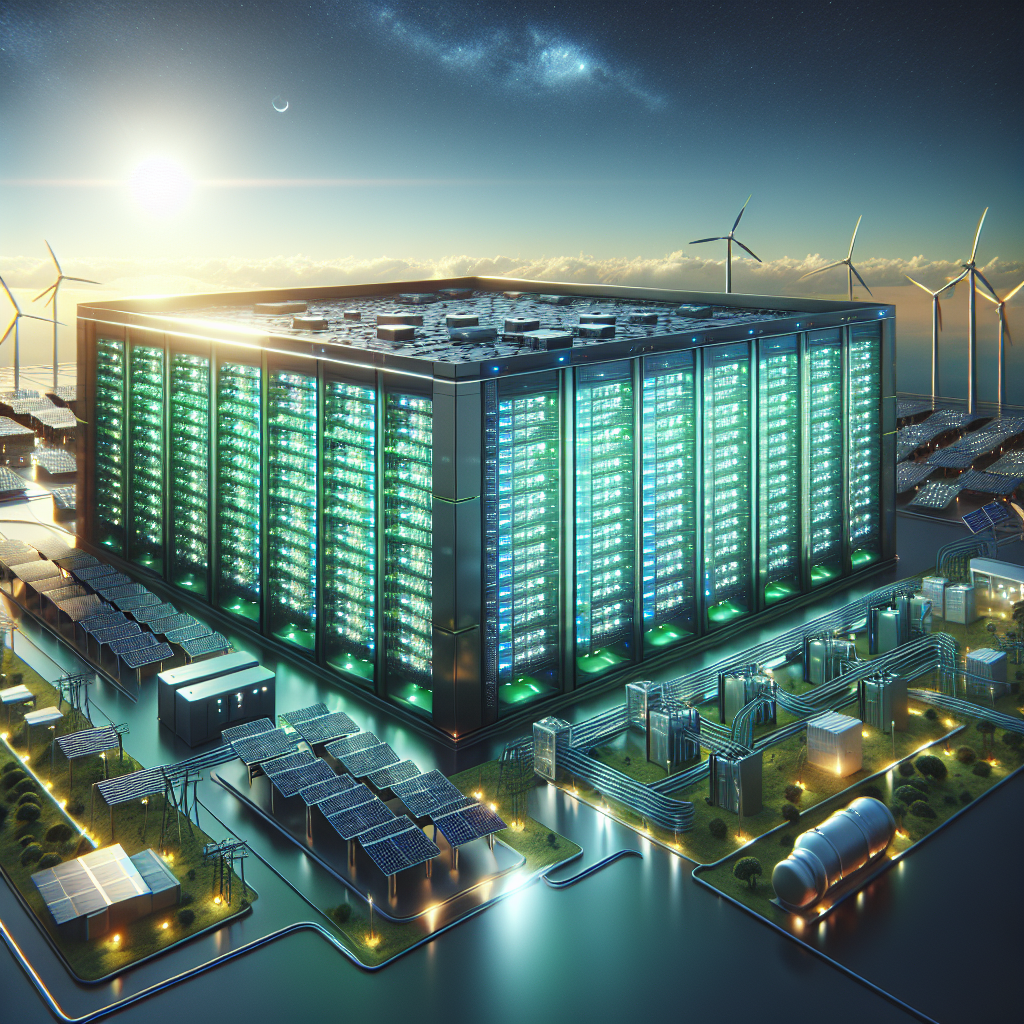
Going Green: How Data Centers are Leading the Way in Energy Conservation
In today’s world, where climate change and environmental concerns are at the forefront of global discussions, it is crucial for businesses to prioritize sustainability and energy conservation. Data centers, which are key players in the digital age and are responsible for storing, processing, and managing vast amounts of data, have been leading the way in going green and reducing their carbon footprint.Data centers are notorious for their high energy consumption, as they require large amounts of electricity to power servers, cooling systems, and other infrastructure. However, in recent years, data center operators have been implementing innovative solutions to reduce their energy use and become more environmentally friendly.
One of the main ways data centers are achieving energy conservation is through the use of renewable energy sources. Many data centers are now powered by wind, solar, or hydroelectric power, reducing their dependence on fossil fuels and lowering their greenhouse gas emissions. By investing in renewable energy, data centers are not only reducing their environmental impact but also saving money in the long run.
In addition to using renewable energy, data centers are also implementing energy-efficient technologies and practices to optimize their operations. This includes using advanced cooling systems, virtualization software, and energy-efficient hardware to reduce power consumption and increase efficiency. By improving the efficiency of their infrastructure, data centers can lower their energy costs and minimize their carbon footprint.
Furthermore, data centers are also exploring innovative ways to reuse waste heat generated by their operations. By capturing and repurposing excess heat, data centers can heat nearby buildings or facilities, reducing the need for additional energy sources and further reducing their environmental impact.
Overall, data centers are leading the way in energy conservation and sustainability efforts. By investing in renewable energy, implementing energy-efficient technologies, and finding creative ways to reuse waste heat, data centers are setting an example for businesses in all industries to follow. As the demand for data storage and processing continues to grow, it is essential for data centers to prioritize sustainability and environmental stewardship in order to create a more sustainable future for generations to come.
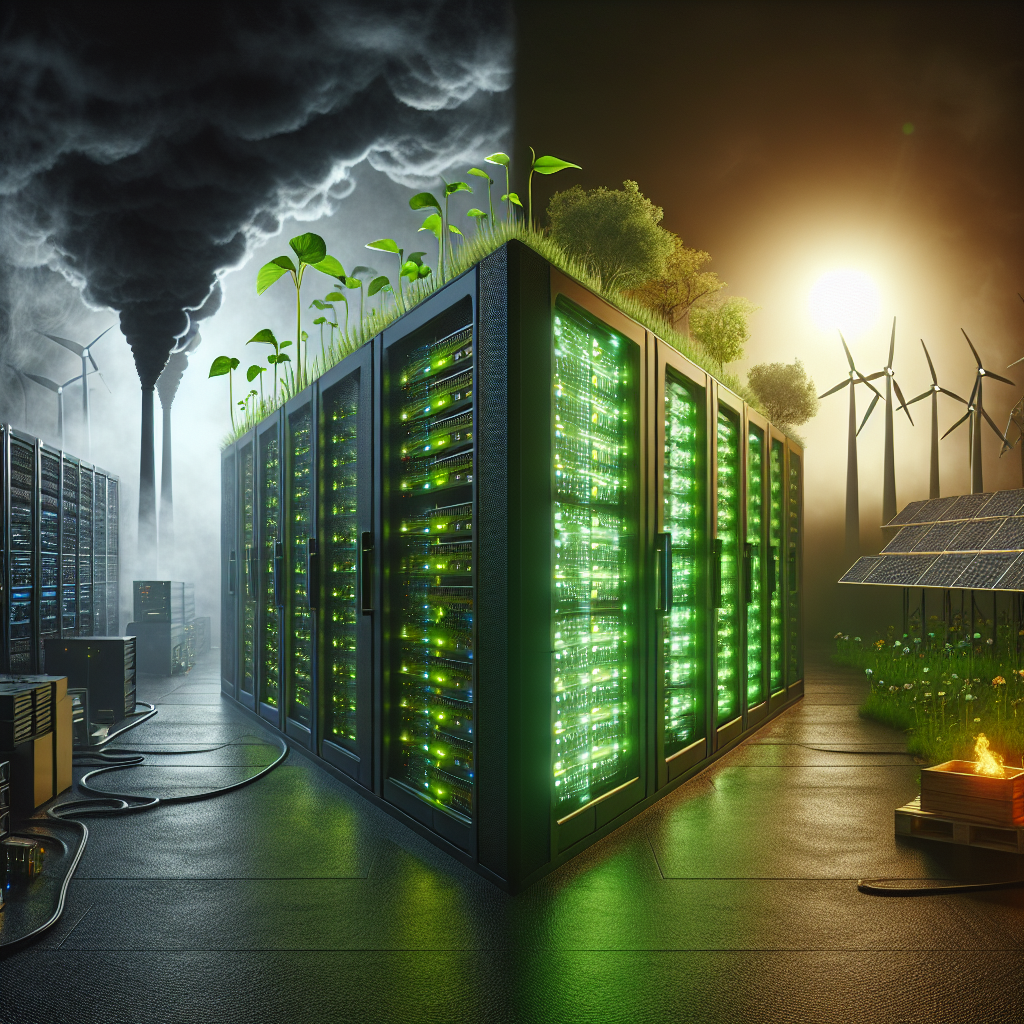
From Energy Consumption to Conservation: How Data Centers are Going Green
In today’s fast-paced digital world, data centers play a crucial role in storing, processing, and distributing vast amounts of information. However, the energy consumption of these facilities has raised concerns about their impact on the environment. As the demand for data centers continues to grow, it is essential for the industry to find ways to reduce their carbon footprint and embrace sustainable practices.One of the key strategies being adopted by data centers to address this issue is going green. This involves implementing energy-efficient technologies, optimizing cooling systems, and leveraging renewable energy sources to power their operations. By reducing energy consumption and carbon emissions, data centers can contribute to a more sustainable future and help mitigate the effects of climate change.
Energy-efficient technologies such as virtualization and consolidation have been instrumental in reducing the energy consumption of data centers. By consolidating servers and optimizing workloads, data centers can operate more efficiently and effectively utilize resources. Additionally, advancements in cooling systems, such as using free cooling or liquid cooling, have helped to reduce the energy required to maintain optimal operating temperatures.
In addition to improving energy efficiency, data centers are also exploring renewable energy sources to power their operations. Solar panels, wind turbines, and geothermal systems are being installed to generate clean and sustainable energy. By integrating renewable energy sources into their infrastructure, data centers can reduce their reliance on fossil fuels and decrease their carbon footprint.
Furthermore, data centers are implementing energy management systems and monitoring tools to track and optimize their energy usage. By analyzing data on power consumption, temperature, and airflow, data centers can identify areas for improvement and make informed decisions to increase efficiency. This data-driven approach allows data centers to continuously monitor and adjust their operations to minimize energy waste and maximize performance.
Overall, the transition from energy consumption to conservation in data centers is a positive step towards a more sustainable future. By adopting green practices and technologies, data centers can reduce their environmental impact, lower operating costs, and contribute to global efforts to combat climate change. As the demand for data centers continues to grow, it is essential for the industry to prioritize sustainability and embrace green initiatives to ensure a cleaner and greener future for all.
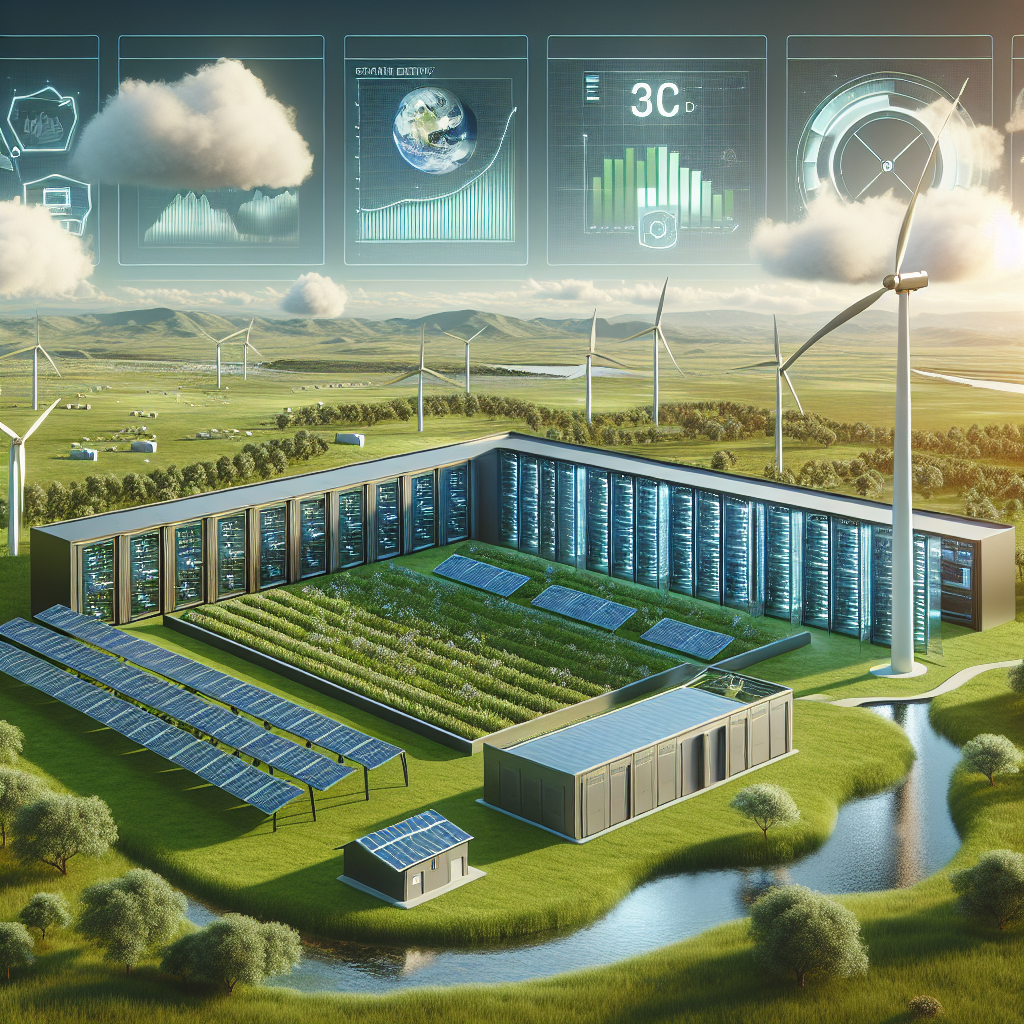
How Data Centers are Leading the Way in Environmental Conservation
Data centers are often seen as energy-intensive facilities that contribute to environmental degradation. However, in recent years, data centers have been leading the way in environmental conservation through various innovative practices and technologies.One of the key ways data centers are reducing their environmental impact is by increasing energy efficiency. Data centers require a significant amount of electricity to power and cool their servers, but advancements in server technology and cooling systems have made it possible to reduce energy consumption. For example, many data centers are now using energy-efficient servers, such as those with high-performance computing capabilities, and implementing innovative cooling techniques like liquid cooling and free-air cooling.
In addition to improving energy efficiency, data centers are also investing in renewable energy sources to power their operations. Many data centers are now sourcing their electricity from solar, wind, and hydroelectric power, reducing their reliance on fossil fuels and lowering their carbon footprint. Some data centers have even built their own renewable energy facilities on-site to generate clean energy for their operations.
Furthermore, data centers are implementing sustainable practices in their operations, such as recycling and waste management programs. Data centers are now recycling electronic waste, such as old servers and IT equipment, to reduce the amount of waste sent to landfills. They are also implementing water conservation measures, such as using recycled water for cooling systems and landscaping.
Another way data centers are leading the way in environmental conservation is through the use of green building designs. Many data centers are now built with sustainable materials and energy-efficient features, such as energy-efficient lighting, insulation, and HVAC systems. Some data centers are even pursuing green building certifications, such as LEED (Leadership in Energy and Environmental Design), to demonstrate their commitment to environmental sustainability.
Overall, data centers are setting a positive example for other industries by prioritizing environmental conservation in their operations. By improving energy efficiency, investing in renewable energy sources, implementing sustainable practices, and using green building designs, data centers are demonstrating that it is possible to reduce their environmental impact while still meeting the increasing demand for data storage and processing. As technology continues to evolve, data centers will continue to play a crucial role in driving environmental conservation efforts and creating a more sustainable future for all.
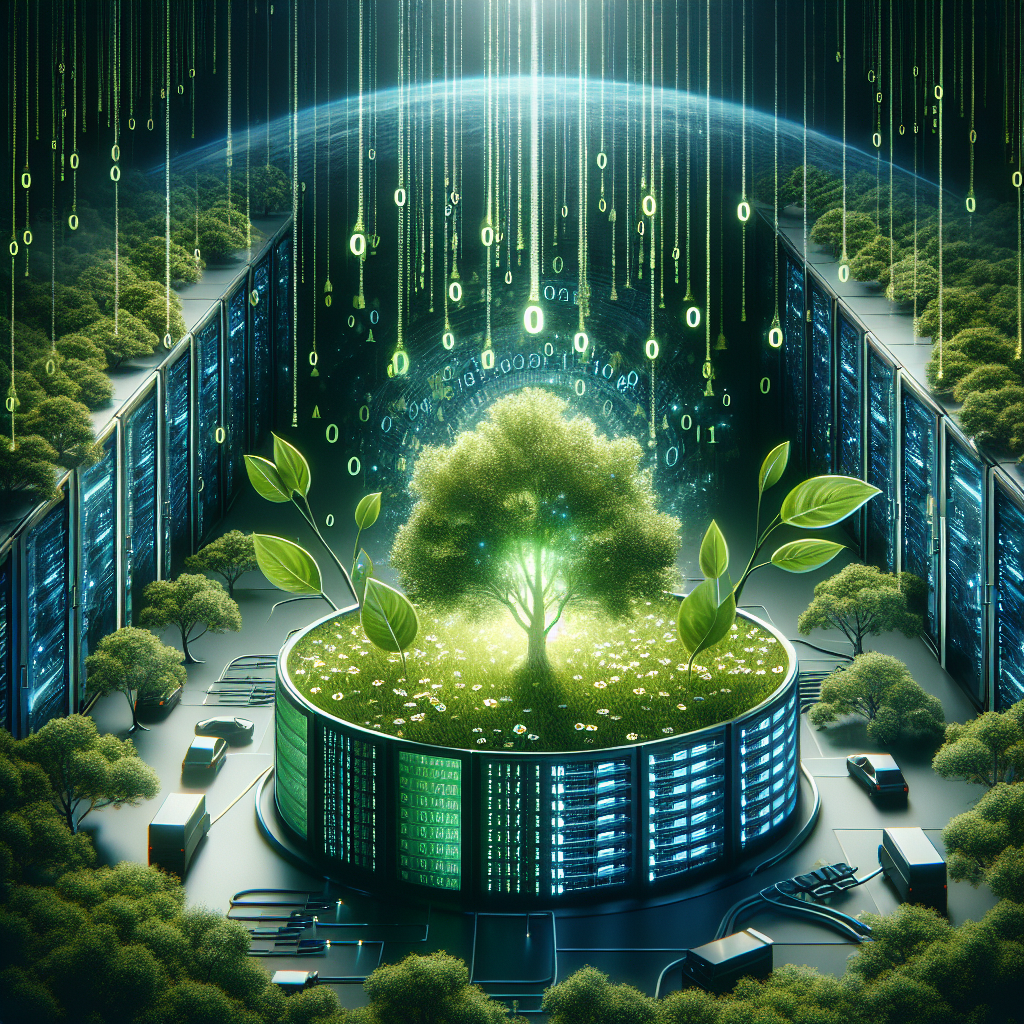
Building a Greener Future: The Role of Data Centers in Environmental Conservation
In recent years, the world has seen a growing awareness of the need to protect the environment and reduce our carbon footprint. As technology continues to advance and our reliance on digital infrastructure grows, the role of data centers in environmental conservation has become increasingly important.Data centers are the backbone of the digital economy, housing the servers and infrastructure that enable the storage, processing, and distribution of vast amounts of data. With the exponential growth of data consumption and the increasing demand for cloud services, data centers have become a major consumer of energy and a significant contributor to carbon emissions.
However, data centers also have the potential to play a key role in building a greener future. By adopting sustainable practices and investing in energy-efficient technologies, data centers can reduce their environmental impact and help mitigate the effects of climate change.
One of the main challenges facing data centers is the high energy consumption required to power and cool the servers. To address this issue, data center operators are increasingly turning to renewable energy sources such as solar, wind, and hydroelectric power. By harnessing clean energy sources, data centers can significantly reduce their carbon footprint and operate more sustainably.
In addition to using renewable energy, data centers can also improve their energy efficiency through measures such as virtualization, consolidation, and advanced cooling technologies. Virtualization allows multiple virtual servers to run on a single physical server, reducing the overall energy consumption and improving resource utilization. Consolidation involves combining multiple servers into a smaller number of more powerful machines, further reducing energy usage and operational costs. Advanced cooling technologies, such as liquid cooling and free cooling systems, can also help data centers reduce their energy consumption and environmental impact.
Furthermore, data centers can enhance their sustainability efforts by implementing green building practices and obtaining certifications such as LEED (Leadership in Energy and Environmental Design). By designing and constructing energy-efficient buildings, data centers can reduce their overall environmental impact and create a more sustainable infrastructure for the future.
In conclusion, data centers have a crucial role to play in environmental conservation and the transition to a greener economy. By embracing sustainable practices, investing in renewable energy sources, and improving energy efficiency, data centers can help build a more environmentally friendly future. As the demand for data continues to grow, it is essential that data center operators prioritize sustainability and work towards reducing their carbon footprint. By working together towards a common goal of environmental preservation, data centers can make a significant contribution to building a greener and more sustainable world for future generations.
